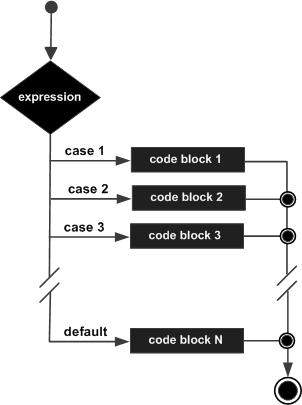A switch statement allows a variable to be tested for equality against a list of values. Each value is called a case, and the variable being switched on is checked for each case.
The basic syntax for creating a switch statement in R is −
switch(expression, case1, case2, case3....)
The following rules apply to a switch statement −
If the value of expression is not a character string it is coerced to integer.
You can have any number of case statements within a switch. Each case is followed by the value to be compared to and a colon.
If the value of the integer is between 1 and nargs()−1 (The max number of arguments)then the corresponding element of case condition is evaluated and the result returned.
If expression evaluates to a character string then that string is matched (exactly) to the names of the elements.
If there is more than one match, the first matching element is returned.
No Default argument is available.
In the case of no match, if there is a unnamed element of ... its value is returned. (If there is more than one such argument an error is returned.)

x <- switch( 3, "first", "second", "third", "fourth" ) print(x)
When the above code is compiled and executed, it produces the following result −
[1] "third"